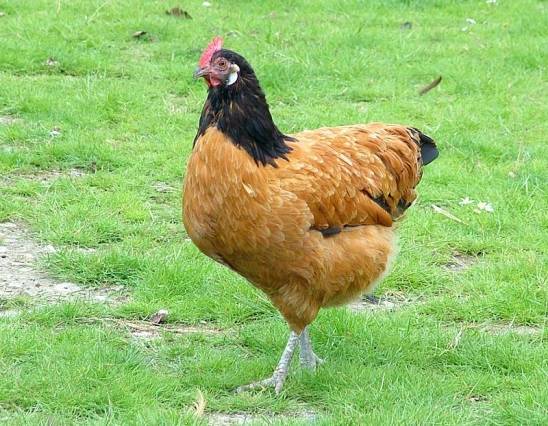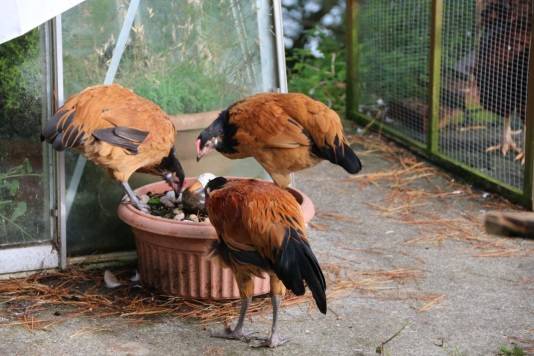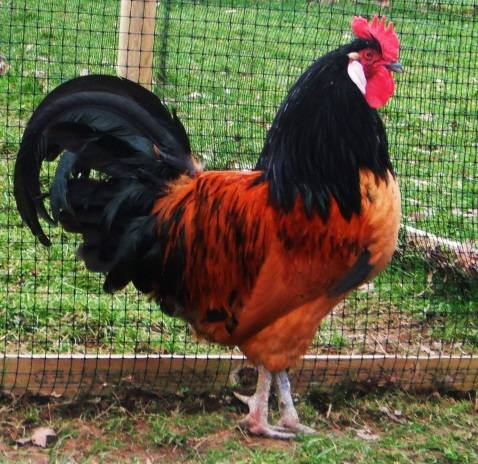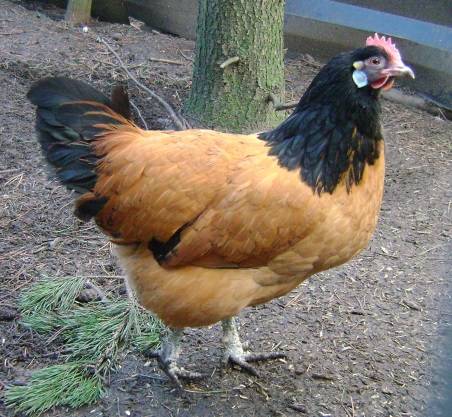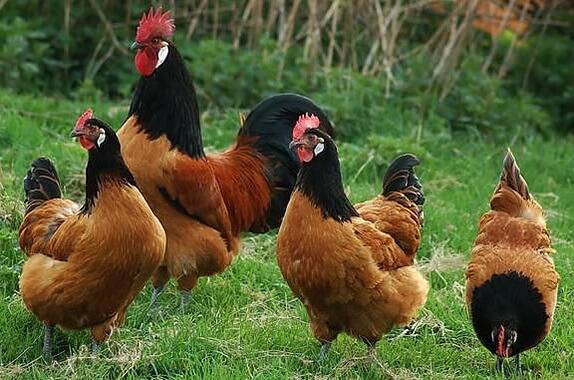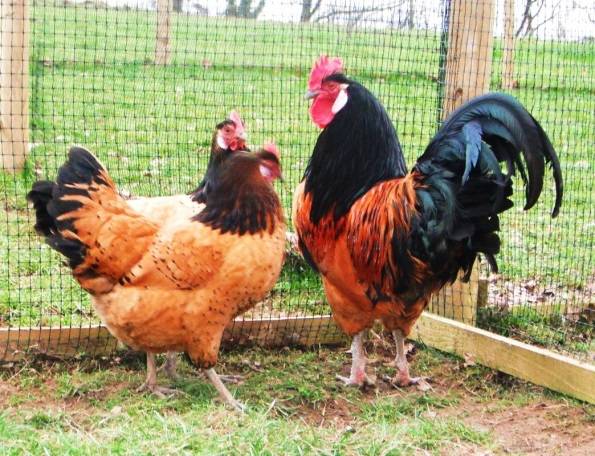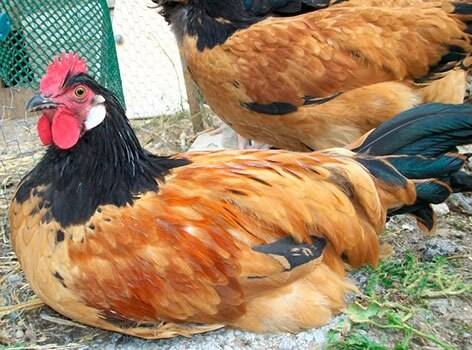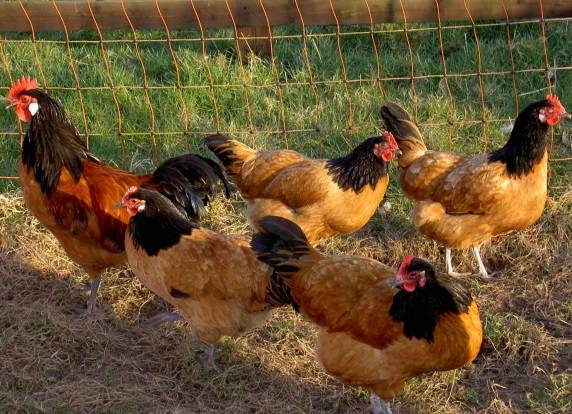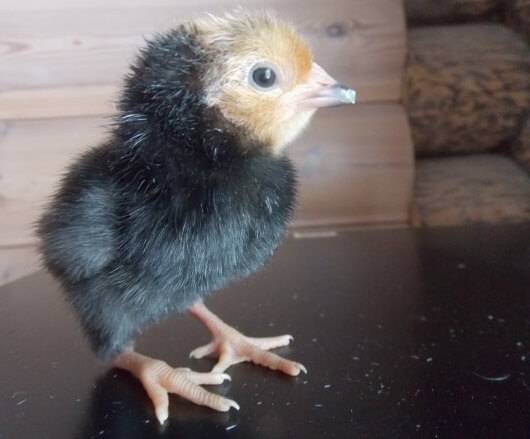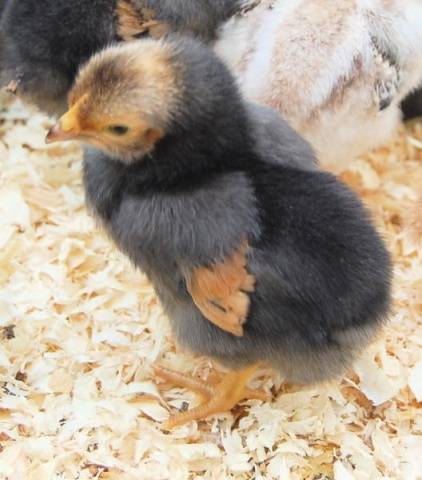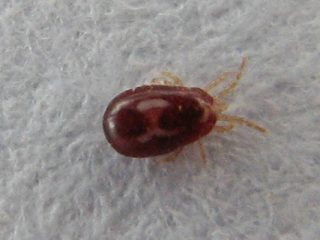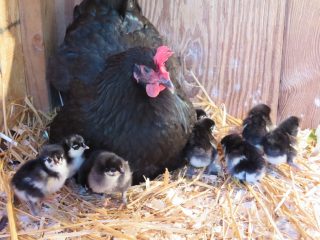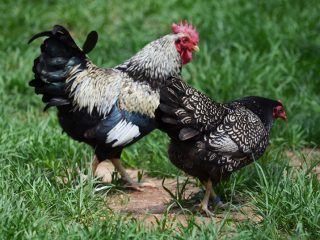Content
Forwerk is a breed of chickens bred in Germany at the very beginning of the twentieth century, and has nothing to do with a well-known company that produces household appliances. Moreover, the firm has priority in using the name. But the chickens were bred by the poultry breeder Oskar Vorwerk, who gave the breed his surname.
In 1900, Oscar began to create a breed with a zonal plumage similar to the Lakenfelder color. But if Lakenfelder has a white body and black neck and tail, then Forwerk has a golden body.
In the photo, the Forwerk chickens are stunningly beautiful.
In North America, this breed is mistakenly called the golden Lakenfelder. In fact, the golden Lakenfelder does exist, but has nothing to do with Vorwerk.
In 1966, a miniature copy of the large Forwerk was created from scratch in North America. Completely different breeds participated in the development of the bantam version.
Breeding large Forverks and bentham versions
Forwerk was registered as a breed in 1913. For its removal were used:
- Lakenfelder;
- Orpington;
- Sussex;
- Andalusian.
Forverk inherited specific color zones from Lakenfelder and Sussex.
The appearance of a miniature copy was attended by:
- Lakenfelder;
- red and blue Wyandotte;
- black-tailed Colombian;
- Rosecomb.
The latter are true bantams.
But since European amateurs miniaturized Forverkov independently and independently of America, using other breeds, the standards of bantamoks differ.
Description
From the description of the Forverk chicken breed, it becomes clear that this bird is of dual use. Forwerk was originally displayed as meat and egg breed... The weight of the large version is 2.5-3.2 kg for cocks and 2-2.5 kg for chickens. Bentams Forwerk American spill weigh: 765 g roosters and 650 g hens. European bantams Forwerk are heavier: 910 g rooster and 680 g chicken.
Forwerk chickens are distinguished by good health and high adaptability to external conditions. Due to their weight, they fly relatively poorly, which makes them easier to maintain. But the concept of bad flyers is relative. Forwerk can rise to a height of 2 meters. This must be taken into account when arranging an aviary. In addition, Forverki are economical in food.
Standard
Forverk is a powerful, well-knocked bird with a wide, small head relative to the body. The rooster has a well-developed large leaf-shaped comb of red color. The chicken has a small pink scallop. The face and earrings match the color of the comb. The lobes are white. Chickens can be bluish in color. The eyes are orange-red. The beak is dark.
The neck is powerful and long. The back and loin are very wide and even. The shoulders are broad and powerful. The wings are long, tightly attached to the body. The tail is fluffy, set at an angle of 45 °. In a rooster, well-developed braids completely cover the tail. The chest is deep, round, well muscled. The belly is well developed.
The legs are short with powerful muscular thighs and lower legs. Metatarsus slate blue. There are 4 toes on the foot. Skin color is gray.
The body color is bright orange. Black feathers on the head and neck. The tail is also black. In roosters, the golden color is more intense. On the verge of transition to a reddish brown with a golden tint.
But due to the specifics of inheritance, this is quite difficult to achieve.
Productivity
Forwerk hens lay up to 170 eggs per year with cream-colored shells. The eggs are small for chickens of this size: 50-55 g. Bentamki, having, like the large version, a double direction, are also capable of laying eggs. But miniature chickens lay eggs in less quantity and less weight.
Forverki are relatively late maturing. In the description of Forwerk chickens it is indicated that they begin laying eggs no earlier than 6 months. But the growth of the bird does not stop. Both hens and roosters reach full sizes only after a year of life.
Dignity
Forverk is a fairly frost-resistant chicken. But it is not worth testing its resistance to cold weather in the northern regions. Easier to build warm chicken coop... According to the descriptions, chickens of the Forwerk breed are friendly, calm, easily attached to people. With the correct sex ratio, they do not arrange fights with each other.
But the reviews about Forwerk chickens are somewhat contradictory: “I have Goldline, two Jersey giants and Forwerk. Our Forwerk Helga is a wild chicken. I ran away a couple of times, it was very difficult to catch. She chases our cats in the garden and all the wild birds that fly there. Lays lovely eggs and looks very beautiful. We are happy that we have it. "
On the one hand, a picture of a monster emerges, but on the other, the owner is glad that he has this breed.
disadvantages
Despite the relatively small number of eggs, Forwerk chickens do not have a tendency to hatch. Therefore, the chicks have to be hatched in an incubator.
This method is still applicable for those who do not have an incubator.
Another drawback is the slow feathering of the chickens.
Breeding
For breeding from Forverki form groups: for one rooster, there are 8-9 hens. Requirements for a rooster should be stricter than for chickens. If the herd was bred at the same time, then it should be taken into account that males in birds mature later than females. Therefore, the first eggs that Forverki chickens lay will be unfertilized. During the first month from the start of laying, eggs can be safely collected for the table.
Only a high-quality egg without external defects is selected for incubation. Even if there is a "cosmetic" growth on the egg, such an egg cannot be placed in the incubator.
Subject to the conditions of incubation and fertilized eggs, after 21 days, black chickens with yellow faces will emerge from the eggs.
Growing up, the chickens begin to change color. The bottom photo shows a chick of the Forwerk breed of hens at an older age.
Feathers of orange color began to grow on the wings.
Due to the slow feathering, Forverkov chicks need an elevated air temperature longer than other breeds and stay longer in the brooder. As they grow older, the temperature is lowered until it is the same as outside the brooder. After that, the chickens can be transferred to the content in the chicken coop or aviary.
How to feed chickens
Forverk is a "natural" breed, developed at a time when compound feed was not yet widespread. For raising chickens Forverkov, you can use the same feed that has been used "from time immemorial": boiled millet and chopped hard-boiled egg. It will be useful to give the chickens cottage cheese. But you must make sure that it is not made from sour milk, but from fresh milk.
Like all chickens of meat and egg breeds, Forverki grow quickly, reaching a weight of 800 g by a month. In order for the bones to keep pace with the growth of muscle mass, it is better to make cottage cheese calcined, adding a couple of tablespoons of calcium chloride per liter of milk.
Also, forverks need to add bone, meat and bone meal or fish meal to the feed. Fresh minced fish can be given. If adult birds begin to peck eggs, well-cooked chopped pork skin is added to their feed.
Forverk chickens of all ages can be given greens from the garden and chopped vegetables and root vegetables. Chickens also need feed chalk and shells.
Testimonials
Conclusion
A photo and description of the Forverk chicken breed can charm any poultry farmer. But at the moment, this chicken is considered very rare even in its homeland. If she appears and wins the hearts of poultry farmers in Russia, then she will most likely be assigned the role of a decorative chicken - decorating the yard. This is bad on the one hand, since the fashion for the breed will ruin the productivity and even the appearance of Forverk. On the other hand, a large population is a guarantee that the breed will not disappear.
